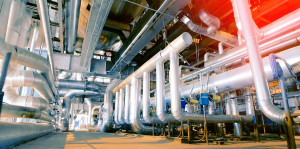The future of our cities, we are told, is smart technology. By connecting everyday objects to the internet, we will enable everything from self-driving cars to bins that signal when they need emptying.
It’s a vision that is both futuristic and, frankly, expensive. While individual sensors and internet connections may be relatively cheap, fitting out entire cities with such technology? Not cheap at all.
Which is why it’s so remarkable that a mid-sized European city has been able to turn its entire bus network into a ‘smart’ system in just four weeks and without deploying a single new sensor.
This is how a city in France has used digital to transform their transport network: https://t.co/MpTNoQd4oS #DigitalEmpowers pic.twitter.com/CBtMNje6BB
— Tata Consultancy Services - Europe (@TCS_Europe) 21 November 2022
Smart thinking
The French city of Belfort achieved the rapid transformation by bringing together existing data to generate new information. The city got ‘smart’ via data analytics based on information already accessible to planners.
Data sources such as bus billing, ticketing data and GPS are pulled together by Tata Consultancy Services and Gfi Informatique using TCS Digital Software & Solutions Group’s Intelligent Urban Exchange software. The information generated now allows city officials to make informed decisions to improve services on the city’s five bus routes.
The software works out the speed of buses between each stop to identify congestion points and allows the city to make any appropriate changes.
It also measures passenger flow including valuable data on when passengers leave a bus, not just when they get on. This allows much more nuanced understanding of passenger behaviour.
The city’s existing ticketing system didn’t let administrators find out how many people used each bus route. The system now works this out by collating several different sources of data. This means that resources currently dedicated to unpopular routes or stops can be redeployed where they are needed the most.
All this information means that officials can not only identify existing problems, they can also closely monitor any changes introduced to ensure they are having the intended effect. This allows constant fine-tuning of the transport system.
Future uses
The software is also expected to reduce overall costs within the bus network and will be used to calculate potential savings from potential future new road construction projects.
“The results were very conclusive. The experiment allowed us to optimize our transportation network and realize savings,” says Yannick Monnier, Director of the Board of Public Transportation of Belfort.
And Yannick Monnier says the system’s success means the city is now looking at using similar technology to develop other parts of the city’s infrastructure.
“It was such a big success that it could be duplicated to improve other major services such as water, waste collection and electricity.”
Efficient cities
Across both the developed and developing worlds, population growth and rapid urbanisation are putting constant strain on our cities. Already more people live in urban than rural areas and this move to the cities will continue.
The networks and services we have relied on for decades risk becoming overwhelmed. Making our cities smarter offers the potential to greatly increase both the efficiency and capacity of existing networks and the ability to plan and build new networks that are best place to meet future needs.
The experiment in Belfort shows that smart cities do not need to be sprawling world cities like Tokyo or New York. Smart cities can be the more ordinary ones too. And just as importantly, technology can make cities smarter without the need for massive investment in new tech networks.
Originally published 24 April 2017. Updated 29 November 2017.
